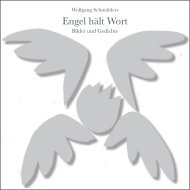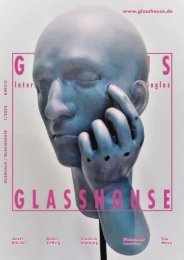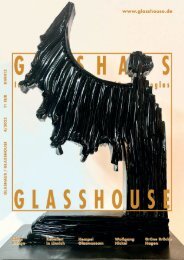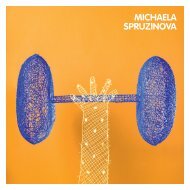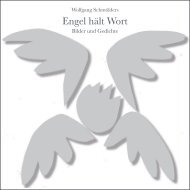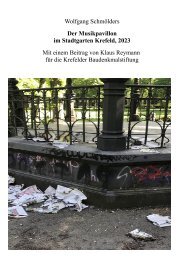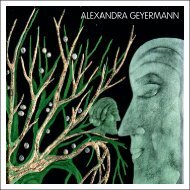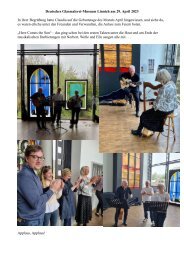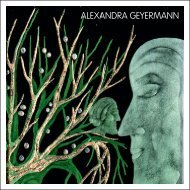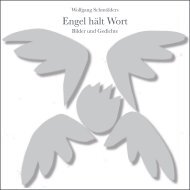Thomas Schütte
Thomas Schütte, 26 Seiten, deutsch/englisch, mit far. Abb.
Thomas Schütte, 26 Seiten, deutsch/englisch, mit far. Abb.
Create successful ePaper yourself
Turn your PDF publications into a flip-book with our unique Google optimized e-Paper software.
THOMAS SCHÜTTE<br />
Baldwin & Guggisberg, „Amphore Metaphore“, 2022, Detail. (Foto: Christoph Lehmann)
The International<br />
Magazine of<br />
Studio Glass<br />
www.glasshouse.de<br />
Read our 3/2022 issue cost<br />
free with the QR-Code.<br />
And order the actual<br />
issue cost free:<br />
glashaus-verlag@t-online.de
GLASHAUS E-Book<br />
<strong>Thomas</strong> <strong>Schütte</strong><br />
Das Spiel mit Maßstab und Material
Vorwort des Herausgebers<br />
Die Skulpturenhalle in Neuss ist das Werk von <strong>Thomas</strong> <strong>Schütte</strong>. Es vereint in sich die<br />
Qualitäten einer Skulptur, eines Museums und einer Ideenfabrik. Irgendwo zwischen<br />
den klassischen arbeitsteiligen Disziplinen steht der Künstler als Schöpfer und Moderator<br />
und spielt mit seinem Publikum. Dass <strong>Schütte</strong> auch in Glas gearbeitet hat, macht<br />
ihn nicht darum interessant. Das hat er ohnehin mit bedeutenden Kollegen (Tony<br />
Cragg, Markus Lüpertz u.a.) gemeinsam. <strong>Schütte</strong> befragt die Materialien auf ihre spezifische<br />
Sprache hin. Durch Deformation und Veränderung der Maßstäbe tritt <strong>Schütte</strong><br />
mit seinem Publikum in einen Dialog. Dem geht in seinem Essay der Autor Han de<br />
Kluijver nach. De Kluijver ist selbst künstlerisch im Glas tätig und stellt unterschiedliche<br />
Aspekte von <strong>Schütte</strong>s Kunst anschaulich dar. Das Umfassende ist nicht die Idee irgendeiner<br />
„Glaskunst“, sondern der Begriff des Individuums in Zeiten kollektiver Emotionen.<br />
Was macht der Künstler mit den verschiedensten Materialien und was machen<br />
seine Werke mit uns?<br />
Wolfgang Schmölders<br />
4|5
Foreword by the publisher<br />
The Skulpturenhalle in Neuss is the work of <strong>Thomas</strong> <strong>Schütte</strong> and combines the<br />
qualities of a sculpture, a museum and an ideas factory. Somewhere between<br />
the classic division of labour disciplines, the artist stands as creator and moderator<br />
and plays with his audience. The fact that <strong>Schütte</strong> has also worked in glass<br />
does not make him interesting. In any case, he has this in common with important<br />
colleagues (Tony Cragg, Markus Lüpertz and others). <strong>Schütte</strong> questions the<br />
materials with regard to their specific language. By deforming and changing the<br />
standards, <strong>Schütte</strong> enters into a dialogue with his audience. The author Han de<br />
Kluijver explores this in his essay. De Kluijver is himself an artist working in glass<br />
and vividly presents different aspects of <strong>Schütte</strong>‘s art. The overarching theme is<br />
not the idea of any kind of „glass art“, but the concept of the individual in times of<br />
collective emotions. What does the artist do with the various materials and what<br />
do his works do with us?<br />
Wolfgang Schmölders
Han de Kluijver<br />
<strong>Thomas</strong> <strong>Schütte</strong> - das Spiel<br />
mit Maßstab und Material<br />
Der deutsche Künstler <strong>Thomas</strong> <strong>Schütte</strong> (geb.<br />
1954 in Oldenburg) beschränkt sich nicht<br />
auf ein bestimmtes Medium, eine typische<br />
Arbeitsweise oder eine erkennbare Handschrift.<br />
Sein Werk zeigt eine Vorliebe für Materialexperimente<br />
und ist voller Anspielungen<br />
auf Popkultur, historische Ereignisse und<br />
Kunstgeschichte. Vor allem aber stehen die<br />
verwirrenden Widersprüche in uns selbst und<br />
in der Welt um uns herum im Mittelpunkt. In<br />
mal heiteren, mal ernsten Skulpturen hinterfragt<br />
<strong>Schütte</strong> unseren eigenen, sich ständig<br />
verändernden physischen und emotionalen<br />
Zustand.<br />
1973 begann <strong>Schütte</strong> sein Studium an der<br />
Kunstakademie in Düsseldorf. Die Kunstakademie<br />
war damals eine Brutstätte für junge<br />
Künstler und auch Heimat des führenden<br />
Konzeptkünstlers Joseph Beuys (1921-1986)<br />
<strong>Thomas</strong> <strong>Schütte</strong> - playing with<br />
scale and material<br />
The German artist <strong>Thomas</strong> <strong>Schütte</strong> (born<br />
1954 in Oldenburg) does not limit himself to<br />
a specific medium, a typical working method<br />
or a recognisable signature style. His work<br />
shows a preference for material experiments<br />
and is full of allusions to pop culture, historical<br />
events and art history. Above all, however,<br />
the confusing contradictions within ourselves<br />
and in the world around us take centre stage.<br />
In sometimes cheerful, sometimes serious<br />
sculptures, <strong>Schütte</strong> scrutinises our own<br />
constantly changing physical and emotional<br />
state.<br />
<strong>Schütte</strong> began his studies at the Düsseldorf<br />
Art Academy in 1973. At the time, it was a<br />
breeding ground for young artists and also<br />
home to the leading conceptual artist Joseph<br />
Beuys (1921 - 1986) and the painter Gerhard<br />
Richter (born 1932), under whom <strong>Schütte</strong><br />
6|7
was taught. Shortly after graduating in 1981,<br />
<strong>Schütte</strong> had his first solo exhibition at the<br />
Konrad Fischer Gallery in Cologne, where<br />
established American artists such as Carl<br />
Andre (born 1935), Sol LeWitt (1928 - 2007)<br />
and Bruce Nauman (born 1941) also exhibited.<br />
During these years, <strong>Schütte</strong> produced<br />
minimalist architectural models, which incidentally<br />
were not realised due to a lack of<br />
funds. At the same time, he turned to figurative<br />
sculpture. Initially unsuccessful, however,<br />
which was to be expected after decades of<br />
abstract and conceptual art.<br />
Looking and being looked at: Now, over<br />
forty years later, the three models „Ship“,<br />
„Stage“ and „Crate“ have been realised in a<br />
large format and can actually be entered at<br />
Museum De Pont in Tilburg. „Ship“ is a tapered<br />
construction with a staircase that allows<br />
you to view the exhibition space from above.<br />
„Crate“ is a large crate that can simply be folded<br />
down. And „Stage“ is a stage on which a<br />
curtain is draped. The works are a commen-<br />
und des Malers Gerhard Richter (geb. 1932),<br />
bei dem <strong>Schütte</strong> unterrichtet wurde. Kurz<br />
nach seinem Abschluss 1981 hatte <strong>Schütte</strong><br />
seine erste Einzelausstellung in der Konrad<br />
Fischer Galerie in Köln, wo auch etablierte<br />
amerikanische Künstler wie Carl Andre (geb.<br />
1935), Sol LeWitt (1928 - 2007) und Bruce Nauman<br />
(geb. 1941) ausstellten. In diesen Jahren<br />
fertigte <strong>Schütte</strong> minimalistische Architekturmodelle<br />
an, die übrigens aus Geldmangel<br />
nicht realisiert wurden. Gleichzeitig wandte er<br />
sich der figurativen Bildhauerei zu. Zunächst<br />
allerdings erfolglos, was nach Jahrzehnten<br />
der abstrakten und konzeptionellen Kunst<br />
nicht anders zu erwarten war.<br />
Schauen und angeschaut werden: Jetzt,<br />
über vierzig Jahre später, sind die drei Modelle<br />
„Schiff“, „Bühne“ und „Kiste“ in einem<br />
großen Format realisiert worden und können<br />
im Museum De Pont in Tilburg bis 28.1.2024<br />
tatsächlich betreten werden. „Schiff“ ist eine<br />
sich verjüngende Konstruktion mit einer Treppe,<br />
über die man den Ausstellungsraum von
oben betrachten kann. „Kiste“ ist eine große<br />
Kiste, die man einfach umklappen kann. Und<br />
„Bühne“ ist eine Bühne, auf der ein Vorhang<br />
drapiert ist. Die Werke sind ein Kommentar<br />
zum Ausstellen von Kunst. Entscheiden sich<br />
die Besucher für den Überblick, für die Isolation,<br />
oder kommen sie füreinander hierher?<br />
In den Werken geht es also um das Schauen<br />
und Angeschaut-Werden.<br />
Die Architekturmodelle bilden ein Bindeglied<br />
in <strong>Schütte</strong>s vielfältigem Werk. Sie vereinen<br />
in konzentrierter Form die verschiedenen<br />
Ausdrucksformen und Themen, die seine<br />
Kunst prägen. Das Betreten und Besichtigen<br />
der Modelle ist jedoch enttäuschend; zumindest<br />
bieten sie keine interessante Architektur.<br />
Viel besser und ansprechender ist<br />
die umfangreiche Auswahl an kleinen und<br />
größeren Architekturmodellen. Diese reichen<br />
von Tempeln und Einfamilienhäusern bis hin<br />
zu Bunkern, Museen und <strong>Schütte</strong>s eigenem<br />
Grabmal. Die Spielzeugpuppen verleihen<br />
den Modellen eine gewisse Absurdität und<br />
tary on the exhibition of art. Do visitors opt for<br />
the overview, for isolation, or do they come<br />
here for each other? The works are therefore<br />
about looking and being looked at.<br />
The architectural models form a link in<br />
<strong>Schütte</strong>‘s diverse oeuvre. They unite in concentrated<br />
form the various forms of expression<br />
and themes that characterise his art.<br />
However, entering and viewing the models<br />
is disappointing; at least they do not offer<br />
any interesting architecture. Much better and<br />
more appealing is the extensive selection of<br />
small and larger architectural models. These<br />
range from temples and detached houses<br />
to bunkers, museums and <strong>Schütte</strong>‘s own<br />
tomb. The toy dolls lend the models a certain<br />
absurdity and sense of scale. While <strong>Schütte</strong><br />
moves between irony, humour and melancholy,<br />
you can also see the fun in the making<br />
in his works.<br />
The exhibition also features three so-called<br />
„one-man houses“: approximately three<br />
metre high models of houses, including<br />
8|9
<strong>Thomas</strong> <strong>Schütte</strong>, „Kopf“. (Foto: Han de Kluijver)
10|11
<strong>Thomas</strong> <strong>Schütte</strong>, Installation „Großer Respekt“, 1994, Stahlplattform, Bronzefiguren, ca. 61 x 450 x 550 cm. (Foto: Han de Kluijver)
einen Sinn für Größe. Während sich <strong>Schütte</strong><br />
zwischen Ironie, Humor und Melancholie bewegt,<br />
kann man in seinen Werken auch den<br />
Spaß an der Herstellung erkennen.<br />
In der Ausstellung sind auch drei so genannte<br />
„Ein-Mann-Häuser“ zu sehen: etwa<br />
drei Meter hohe Modelle von Häusern, einschließlich<br />
Möbeln, in denen eine Person leben<br />
könnte. Diese Person muss jemand sein,<br />
der wenig Licht verträgt, denn die Anzahl der<br />
Fenster ist gering. Die „Ein-Mann-Häuser“<br />
vereinen zwei in <strong>Schütte</strong>s Architekturmodellen<br />
immer wiederkehrende Themen: einen<br />
Zufluchtsort, um der Außenwelt zu entfliehen,<br />
und einen Ort, von dem aus man diese Außenwelt<br />
beobachten kann. Bei den kleineren<br />
Architekturmodellen sind Praktikabilität und<br />
Komfort sehr weit entfernt. Seine Experimente<br />
mit verschiedenen Materialien und Techniken<br />
führen zu neuen, unerwarteten Bildern.<br />
Faszinierend sind die „Großen Geister“,<br />
riesige, glänzende Figuren in verschiedenen<br />
Posen, ausgeführt in Bronze, Aluminium und<br />
furniture, in which one person could live.<br />
This must be someone who can tolerate little<br />
light, as the number of windows is small. The<br />
„one-man houses“ combine two recurring<br />
themes in <strong>Schütte</strong>‘s architectural models: a<br />
place of refuge to escape the outside world<br />
and a place from which one can observe this<br />
outside world. With the smaller architectural<br />
models, practicality and comfort are even<br />
further away. His experiments with different<br />
materials and techniques lead to new, unexpected<br />
images.<br />
Fascinating are the „Great Spirits“, huge,<br />
shiny figures in various poses, executed in<br />
bronze, aluminium and cast iron. One of these<br />
giants stood for many years at the entrance<br />
to the Boijmans Van Beuningen Museum:<br />
friendly and monstrous at the same time,<br />
impressive in length but comical in posture.<br />
Is it a ghostly apparition or a homage to the<br />
human spirit? These human figures are so<br />
strongly distorted that they are far removed<br />
from the classical idea of a figurative sculp-<br />
12|13
<strong>Thomas</strong> <strong>Schütte</strong>, Installation „Stage“, 2023. (Foto: Han de Kluijver)
<strong>Thomas</strong> <strong>Schütte</strong>, „Große Geister“, 1997 - 1998, Aluminium poliert, 238 – 250 cm hoch. (Foto: Han de Kluijver)
Gusseisen. Einer dieser Riesen stand viele<br />
Jahre lang am Eingang des Museums Boijmans<br />
Van Beuningen: freundlich und monströs<br />
zugleich, beeindruckend in der Länge<br />
und komisch in der Haltung. Handelt es sich<br />
um eine Geistererscheinung oder um eine<br />
Hommage an den menschlichen Geist? Diese<br />
menschlichen Figuren sind so stark verzerrt,<br />
dass sie weit von der klassischen Vorstellung<br />
einer figurativen Skulptur entfernt sind. Sie<br />
stellen verschiedene Stadien der emotionalen<br />
und/oder körperlichen Depression dar.<br />
So wie <strong>Schütte</strong> in seinen vergleichsweise<br />
riesigen architektonischen Installationen<br />
zunächst Miniaturfiguren platzierte, spielt er<br />
auch bei den überlebensgroßen Skulpturen<br />
mit dem Maßstab. Diesmal ist der Betrachter<br />
zur Marionette geworden. Es ist die Verschiebung<br />
der Seherfahrung, die den Künstler<br />
beschäftigt. Wann findet der Übergang vom<br />
Intimen zum Monumentalen statt, und was<br />
bedeuten diese Statuen?<br />
Eines der Werke in der ständigen Sammture.<br />
They represent various stages of emotional<br />
and/or physical depression.<br />
Just as <strong>Schütte</strong> initially placed miniature<br />
figures in his comparatively huge architectural<br />
installations, he also plays with scale in<br />
his larger-than-life sculptures. This time the<br />
viewer has become a puppet. It is the shift in<br />
visual experience that preoccupies the artist.<br />
When does the transition from the intimate<br />
to the monumental take place, and what do<br />
these statues mean?<br />
One of the works in De Pont‘s permanent<br />
collection is „Great Respect“, a three-dimensional<br />
model of a huge memorial. People<br />
walk across terraces connected by steps. In<br />
the centre are three statues of men gesticulating<br />
busily, but they are barely noticed by<br />
the people on the platforms.<br />
Over the years, <strong>Schütte</strong> has built up a<br />
repertoire of forms and themes to which he<br />
returns again and again. Many of the miniature<br />
series from the 1990s can be seen again<br />
in the following decade in monumental<br />
16|17
<strong>Thomas</strong> <strong>Schütte</strong>, „One Man Houses“, 2003, ca. 3 m hoch. (Foto: Han de Kluijver)
lung von De Pont ist „Grosser Respekt“, ein<br />
dreidimensionales Modell eines riesigen<br />
Mahnmals. Menschen laufen über Terrassen,<br />
die durch Treppen miteinander verbunden<br />
sind. In der Mitte stehen drei Statuen von emsig<br />
gestikulierenden Männern, die von den<br />
Menschen auf den Plattformen jedoch kaum<br />
beachtet werden.<br />
Im Laufe der Jahre baute sich <strong>Schütte</strong> ein<br />
Repertoire an Formen und Themen auf, zu<br />
denen er immer wieder zurückkehrt. Viele der<br />
Miniaturserien aus den 1990er Jahren sind<br />
im darauffolgenden Jahrzehnt in monumentalem<br />
Format und ausgeführt in verschiedenen<br />
Materialien wieder zu sehen. Neben<br />
Skulpturen und Installationen umfasst das<br />
Oeuvre von <strong>Thomas</strong> <strong>Schütte</strong> auch Aquarelle,<br />
Gemälde, Glasobjekte und Radierungen. Seit<br />
den 1980er Jahren gehört <strong>Schütte</strong> zu den<br />
deutschen Bildhauern, die sich von Minimal<br />
Art und Konzeptkunst distanzieren. Wie<br />
Reinhardt Mucha, Hubert Kiecol und andere<br />
entwickelt er eine postmoderne Praxis, in der<br />
format and executed in various materials. In<br />
addition to sculptures and installations, <strong>Thomas</strong><br />
<strong>Schütte</strong>‘s oeuvre also includes watercolours,<br />
paintings, glass objects and etchings.<br />
Since the 1980s, <strong>Schütte</strong> has been one of<br />
the German sculptors who have distanced<br />
themselves from Minimal Art and Conceptual<br />
Art. Like Reinhardt Mucha, Hubert Kiecol<br />
and others, he has developed a postmodern<br />
practice in which references to the history<br />
of art and architecture are combined with a<br />
good dose of relativisation of the modernist<br />
ideal in sculpture.<br />
Even in his glass portraits, which were created<br />
between 2011 and 2022 at Studio Berengo<br />
in Murano, the facial features are almost<br />
deformed. They are cast using the classic lost<br />
wax technique. In his glass sculptures, <strong>Schütte</strong><br />
returns to an exploration of the human<br />
form and the human head in particular. The<br />
„Garden Gnomes S“ are unexpected, a series<br />
of coloured vases reminiscent of postmodern<br />
design, standing elegantly on antique tables.<br />
18|19
<strong>Thomas</strong> <strong>Schütte</strong>, „Grüner Kopf“. (Foto: Han de Kluijver)
Bezüge zur Kunst- und Architekturgeschichte<br />
mit einer gehörigen Portion Relativierung des<br />
modernistischen Ideals in der Bildhauerei<br />
verbunden sind.<br />
Selbst in seinen Glasporträts, die zwischen<br />
2011 und 2022 im Studio Berengo in Murano<br />
entstanden sind, sind die Gesichtszüge deformiert.<br />
Sie werden im klassischen Wachsausschmelzverfahren<br />
gegossen. In seinen<br />
Glasskulpturen kehrt <strong>Schütte</strong> zu einer Auseinandersetzung<br />
mit der menschlichen Form<br />
und insbesondere dem menschlichen Kopf<br />
zurück. Unerwartet sind die „Gartenzwerge<br />
S“, eine Reihe von farbigen Vasen, die an<br />
postmodernes Design erinnern und elegant<br />
auf antiken Tischen stehen. Nichts scheint<br />
<strong>Schütte</strong> zu behindern: Die Freiheit und Neugier<br />
des Künstlers auf Form und Material und<br />
die Freude am Machen sprühen aus seinem<br />
Werk.<br />
Nothing seems to hinder <strong>Schütte</strong>: The artist‘s<br />
freedom and curiosity about form and material<br />
and the joy of making sparkle from his<br />
work.<br />
20|21
<strong>Thomas</strong> <strong>Schütte</strong>, „Liegender Kopf“. (Foto: Norbert von Dahlen)
22|23<br />
<strong>Thomas</strong> <strong>Schütte</strong>, „Kopf“. (Foto: Norbert von Dahlen)
Das Titelbild zeigt <strong>Thomas</strong> <strong>Schütte</strong>, „Liegender Kopf“,<br />
Ausstellung im <strong>Schütte</strong> Pavillon, Neuss, 2019.<br />
(Foto: Norbert von Dahlen)<br />
Layout: Denis Svec, Jingga adworks, Krefeld<br />
Glashaus-Verlag<br />
Stadtgarten 4<br />
47798 Krefeld<br />
GERMANY<br />
glashaus-verlag@t-online.de<br />
Abdruck nur mit schriftlicher Genehmigung von Glashaus-Verlag<br />
1. Auflage, 2023
Baldwin & Guggisberg, „Amphore Metaphore“, 2022, Detail. (Foto: Christoph Lehmann)<br />
Weitere Titel im Glashaus-Verlag<br />
Wolfgang Schmölders<br />
Engel hält Wort<br />
Bilder und Gedichte<br />
Engel hält Wort (THE GLASSHOUSE BOOK OF ANGELS)<br />
7. Auflage, 2023, 75 Seiten, deutsch/englisch,<br />
mit zahlr. farb. Abb.<br />
EUNSUH CHOI<br />
EUNSUH CHOI<br />
1. Auflage, 2023, 24 Seiten, deutsch/englisch,<br />
mit zahlr. farb. Abb.<br />
ALEXANDRA GEYERMANN<br />
ALEXANDRA GEYERMANN<br />
2. Auflage, 2023, 57 Seiten, deutsch/englisch,<br />
mit zahlr. farb. Abb.<br />
PHILIPP BALDWIN &<br />
MONICA GUGGISBERG<br />
PHILIPP BALDWIN & MONICA GUGGISBERG<br />
1. Auflage, 2023, 25 Seiten, deutsch/englisch<br />
mit zahlr. farb. Abb.<br />
Für Abonnenten von GLASHAUS kostenlos / cost free for subscribers to GLASSHOUSE.<br />
Bestellungen / orders: glashaus-verlag@t-online.de




